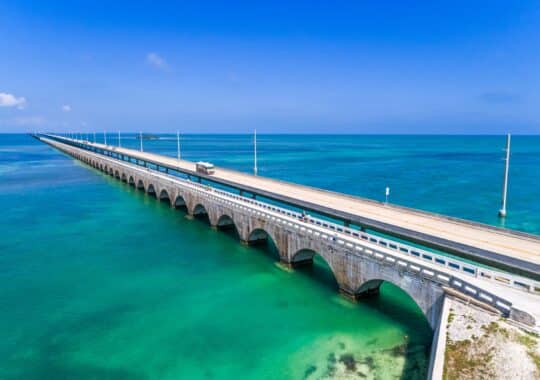|
Getting your Trinity Audio player ready...
|
Florida has an undeniable pull, thanks to its stunning beaches, vibrant nightlife, and an energy that makes every day feel like a holiday. But behind the picture-perfect palm trees and endless sunshine, there’s a reality check: Florida isn’t cheap. From accommodation and dining to entertainment and unexpected costs, a trip here can take a serious toll on your finances if you’re not prepared. So before you book that flight, let’s break down what it really takes to do Florida right without burning through your savings.

The Dream vs. The Damage: Is Florida Really That Expensive?
Florida is a fantasy, but it’s not a cheap one. Whether you’re craving the glitz of Miami Beach, the magic of Orlando’s theme parks, or the laid-back vibes of the Florida Keys, every paradise has a price tag. The trick is knowing where to spend, where to save, and when to say, “No thanks, I’ll pass on that $25 piña colada.”
- Accommodation: Many of Florida’s accommodations are luxury high-rises, beachside resorts, and boutique hotels that can make your credit card sweat. Expect to shell out anywhere from $150 to $500 a night depending on where you land.
- Food & Drinks: That fresh seafood and tropical cocktails? Incredible, but they add up fast. You can keep it budget-friendly with local food trucks or Cuban bakeries, but if you’re dining oceanfront, prepare for premium pricing. The U.S. Census Bureau reports that Florida is the fifth most expensive state in the country for food expenses, with the average weekly grocery cost being approximately $287.27, so it is no surprise that eating out can be costly.
- Attractions: Theme parks are a world of their own—financially and literally. A one-day ticket to Disney or Universal? That’s $150 before you even think about buying a butterbeer or a pair of Mickey ears.
Budgeting Like a Boss: How to Do Florida Without Going Broke
Timing is Everything
If you can, skip the peak seasons (spring break and holidays) when prices soar. Instead, aim for shoulder seasons—late spring or early fall—when flights and hotels are significantly cheaper, and you won’t have to elbow your way through crowds.
Ditch the Hotels, Go Local
Consider vacation rentals, Airbnbs, or even house-swapping. If you must stay in a hotel, look beyond the beachfront properties—sometimes a 10-minute drive saves you hundreds.
Eat Smart, Splurge Strategically
Yes, you deserve that one night of indulgence at a swanky seafood restaurant, but balance it out with some low-cost eats. Florida is a haven for hole-in-the-wall gems and food trucks serving killer Cuban sandwiches, conch fritters, and stone crab.
Enjoy Florida’s Freebies
Not everything in Florida costs a fortune. Some of the best experiences—like walking South Beach at sunset, kayaking in natural springs, exploring state parks, or hunting for seashells—are completely free.
If you do run into unexpected expenses, you may need to look for online options to keep your budget afloat. You can try to get access to online money to ensure your trip stays stress-free to cover any emergency expenses that may arise, such as a medical bill.
Skip the Tourist Traps
There’s no rule that says you have to drop $200 on a glass-bottom boat tour or a VIP club experience. It’s also very important to be aware of the types of tourist traps you may encounter. Sometimes, the best memories come from grabbing a beach towel, a six-pack, and watching the waves roll in.
So, Should You Book That Trip?
Absolutely. Florida is worth it. The key is knowing how to experience it without maxing out your credit card. Be strategic, splurge where it matters, and remember: the best part of Florida isn’t the five-star resorts or the $50 lobster tails—it’s the feeling of the sun on your skin, the salt in your hair, and the realization that sometimes, the best things in life (or at least in Florida) really are free.
So, are you in? Pack your bags, check your budget, and get ready to soak up the sun—without burning through your savings.



